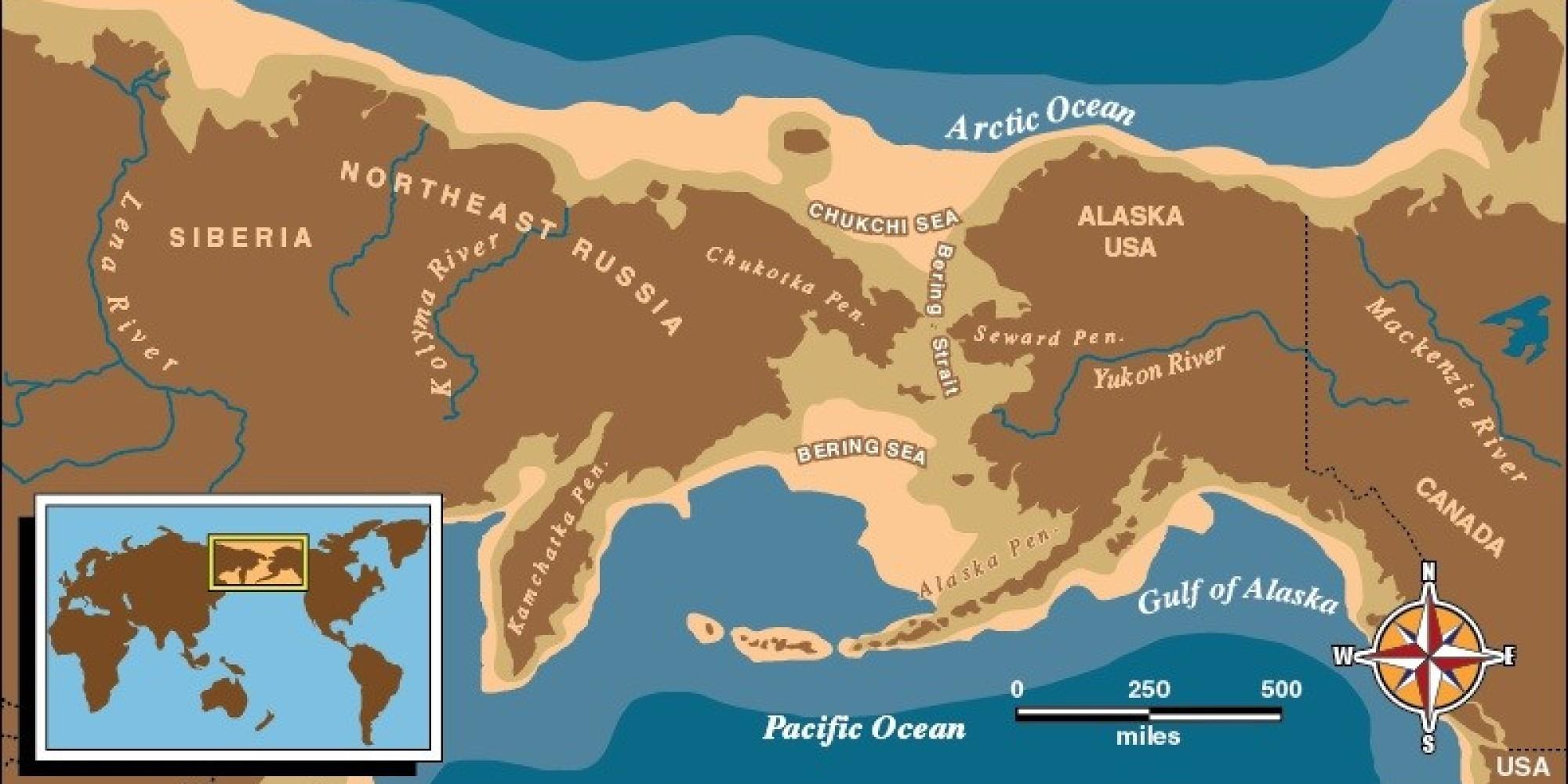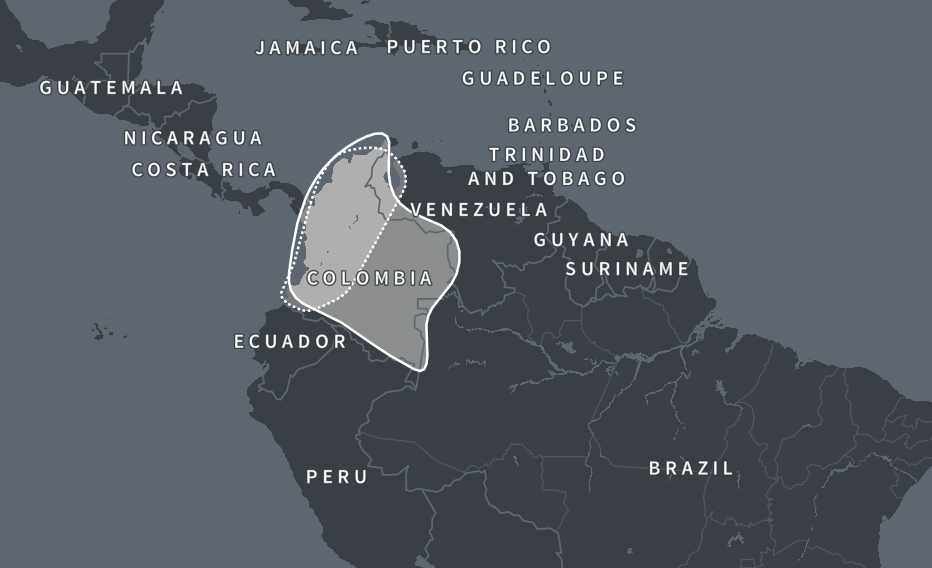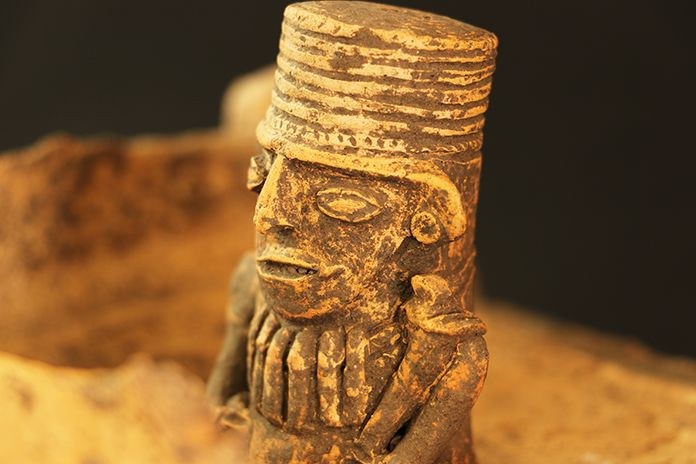What is Indigenous Americas-Columbia & Venezuela DNA Ethnicity on Ancestry?
In this article we will be looking more closely at the Indigenous Americas Colombia & Venezuela DNA region. We will look at where it is and who the indigenous people of that region were. So find out more about your DNA ancestors of this region read on.
History of Humans in the Americas
The Land Bridge:
Although there is no exact date for when humans first arrived in the Americas there are several prevailing theories. The most common one of course being the land bridge theory. During the last ice age between 19,000 – 8700 BC, sea levels were 100 feet below the modern-day. This was due to vast quantities of water being frozen in glacier form.
During that last ice age, the Bering sea as we know it today was actually a land bridge reaching all the way to Siberia. It is thought that around 14,000 years ago stone age hunters and gatherers followed game across this land bridge and became the first humans to settle within the Americas.

It is also believed that gradually these settlers then headed deeper into the Americas, traveling south in small groups. Due to the ongoing effects of the ice age these groups remained small because conditions were not conducive with large settlements or nomadic tribes.
Today's Indigenous peoples likely descend from a now-vanished ancient group known as the Paleo-Siberians. In DNA testing Indigenous Americas DNA has little in common with modern-day Siberians but in 2019 a 10,000 year old skeleton found in Siberia did show notable similarities to modern-day Native peoples in the Americas.
Traveling by Sea:
There exist several theories whereby early indigenous people of the Americas may have interacted and bred with oceanic explorers prior to the arrival of Columbus. In DNA tests taken of inhabitants of Rapa Nui (Easter Island), these people showed small sections of Native American DNA.
Easter Island is over 2000 miles away from the closest contact with the Americas which would be the coast of Chile. The DNA suggests that these Easter Islanders had a Native American Ancestor from around 1280 – 1495 A.D. It is therefore likely these seafaring Polynesians made the trip to the Americas and some may have stayed.
Recent archaeological evidence also indicates that Vikings were present in the United States around the 11th century A.D. It is reasonable to assume there would be a possibility that some may have settled and assimilated into local tribes.
Indigenous Americas Colombia & Venezuela DNA Region
The South American AncestryDNA region known as Indigenous Americas Colombia & Venezuela as the name suggests does cover the majority of the geographical country of Colombia. Its coverage of Venezuela however is less extensive with only a relatively small portion in the west of the country included in this DNA region.

This region does also spill over into Patagonia to the north and to the southeast it is also found in some border regions with Brazil. The Venezuela aspect of this region is one sub-region and Colombia’s section consists of 8 sub-regions. These are as follows:

- Andean Central
- Andean East Central
- Andean North
- Andean Southeast
- Andean Southwest & Pacific South
- Caribbean
- North & Central Colombia
- Southwest Columbia
Indigenous Americas Colombia and Venezuela History
The location of the region we know today as Colombia would have been right in the corridor of the first humans to enter South America coming down though North America. Archaeological finds indicate a human presence in the region between 18,000 – 8000 BC.

Signs of actual more permanent presence have been found in the region dating back to 12,500 BC when hunter gatherer peoples are thought to have been roaming the area. It was between 5,000 – 1,000 BC that some of these tribes started to establish fixed settlements.
Some of the peoples who settled in the region known today as Colombia were the Muisca, Zenu Quimbaya and Tairona. Together they would develop a political system known as Cacicazgos. It was a pyramidal structure hierarchy with the Caciques as the heads.
Farming would dominate this period of Colombia’s development with each of the main tribes having their own range. There was conflict between them obviously with some groups having a more warlike mentality for example a group known as the Caribs were almost constantly at war with someone.
The Spanish
The first stable Spanish town settled in South America was Santa Maria la Antigua del Darien founded in 1510 in Colombia. Following this Conquistadors started to work their way through the region we know as Colombia making alliances with tribes with the intent of using them to subdue other tribes they may already be in conflict with.
In the 16th century a decree from Spain opened up the lands they had seized in the region for sale to potential Spanish colonists. These colonists started farming and seized areas for mining of precious mineral resources.
How Did You Inherit Indigenous Americas Chile Region DNA?
It is important to note that due to the small number of original humans that likely crossed the land bridge and thousands of years of isolation, Indigenous DNA is very distinct. Over thousands of years it has changed enough however to pinpoint populations with common DNA such as the Indigenous Americas Colombia & Venezuela region.
As mentioned many individuals from South and Central America may have some Indigenous DNA based on intermarriage between early Spanish settlers and the local native groups such as the Muisca and Zenu amongst others.
Depending on how high your percentage of Indigenous Americas Colombia & Venezuela DNA is, its origins can vary. If you have a high percentage you may have a recent ancestor who was almost 100% Indigenous. Often if this is the case you would likely have some idea of who this was.
In the case of lower percentages of Native DNA, it might be an indication of a more distant unknown indigenous ancestor. In order to discover this connection, you may have to do some deep research to try and pinpoint at what point that DNA entered your family tree.
Final Thoughts
The Colombia and Venezuela region of South America was an ally of migration for the indigenous peoples of the Americas. All those of native origin that reside throughout South America today would have had ancestors that passed through this region and may even have settled there for a period.
Those with Colombia and Venezuela indigenous Americas DNA in the AncestryDNA ethnicity estimate will likely have a connection to those first peoples who came into the region from North America and after roaming the region's lands for generations finally decided to settle.
Over thousands of years they would have lived in both harmony and conflict with other local tribes until the arrival of the Spanish. At this point they would have experienced high population loss and been forced into more concentrated regions.
The DNA of these first Colombian peoples has extended to Venezuela, Brazil, Patagonia and much further in their descendants. Thousands of Hispanic individuals in the US likely have DNA from the indigenous regions of South America including that of the Colombia and Venezuela DNA region.
Link To or Reference This Page
We spent a lot of time downloading, cleaning, merging, and formatting the data that is shown on the site.
If you found the data or information on this page useful in your research, please use the tool below to properly cite or reference Name Census as the source. We appreciate your support!
-
<a href="https://namecensus.com/blog/what-is-indigenous-americas-columbia-venezuela-dna-ethnicity-on-ancestry/">What is Indigenous Americas-Columbia & Venezuela DNA Ethnicity on Ancestry?</a>
-
"What is Indigenous Americas-Columbia & Venezuela DNA Ethnicity on Ancestry?". NameCensus.com. Accessed on May 10, 2024. https://namecensus.com/blog/what-is-indigenous-americas-columbia-venezuela-dna-ethnicity-on-ancestry/.
-
"What is Indigenous Americas-Columbia & Venezuela DNA Ethnicity on Ancestry?". NameCensus.com, https://namecensus.com/blog/what-is-indigenous-americas-columbia-venezuela-dna-ethnicity-on-ancestry/. Accessed 10 May, 2024
-
What is Indigenous Americas-Columbia & Venezuela DNA Ethnicity on Ancestry?. NameCensus.com. Retrieved from https://namecensus.com/blog/what-is-indigenous-americas-columbia-venezuela-dna-ethnicity-on-ancestry/.
